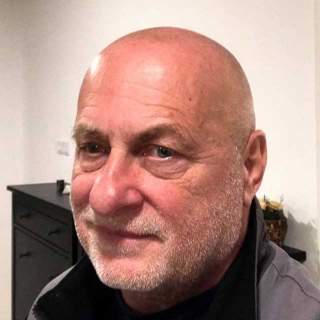Hagia Sophia is mosque again
Turkey's President Recep Tayyip Erdogan announced the decision after a court annulled the site's museum status on the 10th of July 2020. "Like all our mosques, the doors of Hagia Sophia will be wide open to locals and foreigners, Muslims and non-Muslims," he added.
This news has caused different emotions around the world. An international protest has arisen, an EU warning has been declared, which was practically an interference in Turkish internal affairs, an outrage of secular circles, an Orthodox ecclesiastical regret was expressed, etc.
Each group evaluates the news differently. Anyone with only a political view sees that as a political move of President Erdogan in order to influence Turkish and international Muslim sentiment in a situation where Turkey has grown into a dominant regional power. Turkey has an impact on the future of the Mediterranean basin, on the fate of Europe due to its refugee policy, and on the logistics of oil and gas pipelines.
Anyone who approaches this issue on an emotional basis considers a parrticular period in the history of Hagia Sophia important according to the role what the building played in a given time. Orthodox people see their cathedral, secularists see their museum and Muslims see their mosque with the historical events associated with it.
For about a thousand years, the Hagia Sophia was the seat of the Patriarchate of Constantinople. During the Latin Empire (1204-1261), it was looted by the Crusaders and converted into a Roman Catholic church. In 1261, as an overture to the restoration of the Byzantine Empire, the Greek armies recaptured Constantinople, and Mikhail Palailogos of Nicaea was crowned in the Hagia Sophia as Michael VIII.

qibla from Istanbul
When II. Mehmed, the “Conqueror” (Fatih), occupied Constantinople on May 29, 1453, ordered the conversion of the Hagia Sophia into a Muslim mosque and on June 1 attended the prayer held here. Important note: It is true that Sultan Fatih captured Constantinople in battle, however he did not take Hagia Sophia by force, but bought it! This fact is never emphasized by anyone. He defeated the troop with a troop, but he did not fight with faith, but settled the payment. From then on, Hagia Sophia was a mosque for five centuries. Not just an ordinary mosque! It's well known that in Islam not only the stone of Kaaba in Mecca served as a direction of prayer (qibla), but there was a period when believers prayed towards the Al-Aqsa in Jerusalem. From Istanbul, the special situation arises that Jerusalem and Mecca are in the same direction. Jerusalem and Mecca from Istanbul, are in the same line.
However, in 1934, Kemal Ataturk transformed the building into a museum. Ataturk did everything he could to “modernize” Turkish thinking. He introduced the Latin letters, transformed the institutional system by eliminating the traditional establishments associated with Islam or rather the extermination of Islamic thinking with all means. The well-known call for prayer (Azan) could only be uttered from the minarets in Turkish language, which was only re-authorized in Arabic in 1950. During the military dictatorships, the Imams were able to recite only centrally written Friday speeches. But we know very well that everything that is suppressed will be strengthened. This has also happened with Islamic aspirations. But now let’s move on to another famous case and see what happened to the second largest mosque after the Grand Mosque of Mecca, the Grand Mosque of Córdoba?

Mosque of Córdoba
The Mosque–Cathedral of Córdoba (Spanish: Mezquita-Catedral de Córdoba), officially known by its ecclesiastical name, the Cathedral of Our Lady of the Assumption (Spanish: Catedral de Nuestra Señora de la Asunción), is the Catholic cathedral of the Diocese of Córdoba dedicated to the Assumption of the Virgin Mary and located in the Spanish region of Andalusia. Originally in 784 Abd al-Rahman I ordered the establishment of a mosque here, which was considerably expanded by later Muslim rulers. Córdoba returned to Christian rule in 1236 during the Reconquista, and the building was converted to a Catholic church.
Behold, Muslim hearts also hurt, for we believe that idolatry takes place in the sanctuary dedicated to Allah! Who doesn’t believe, go there and look inside! But we don’t cry, we don't panic, we just feel sorry.
This is the fate of stones and buildings. Hundreds and thousands of mosques were converted into churches and churches into mosques. A shrine is not just a place of prayer, but a symbol. Occupying and transforming symbols carries a message.
For my part, I welcome the return of the Hagia Sophia into a mosque, as it does not prevent anyone from visiting this fantastic building and the original function, i.e. the service of One God can take place again.
But I also see only simple stones there. The political leadership in Turkey, Saudi Arabia or Iran don't even come up in my mind. It is not Shiite, Sunni, Wahhabi nonsenses that fill the space in my mind that I reserve for faith, but I see that Allah takes back and preserves everything that belongs to Him and lets lose what man nominally devotes to Him, but in fact, what man established only to glorify him/herself in it. This has always been and will be the case in history.
My mosque is still a tree. A non-Orthodox, non-Catholic, non-Shiite and non-Sunni tree. A tree that provides shade. A tree whose wonders are explained by secular scholars, priests, spiritual leaders, but no-one understand its “holiness”. A tree that nobody had to destroy the Incas, Mayans and to hunt slaves for its sake. A tree under which neither pedophile priests nor brainwashed demagogue sheiks collect stunned zombies in order to turn them against each other.




















